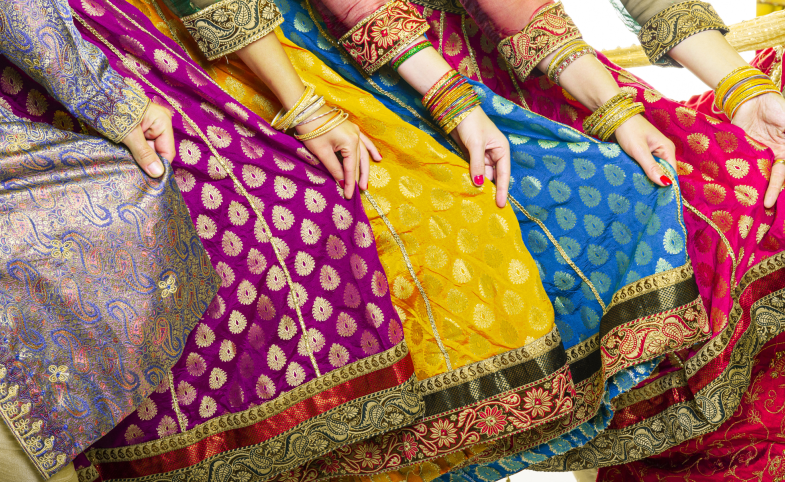With a population of 216 million and a distinct culture of fan fervor, Brazil is a unique region for cultural exchange and diplomacy. American sports teams and entertainers have shown a new dedication to the Brazilian...
KEEP READINGThe CPD Blog is intended to stimulate dialog among scholars and practitioners from around the world in the public diplomacy sphere. The opinions represented here are the authors' own and do not necessarily reflect CPD's views. For blogger guidelines, click here.

Riding the WAVES of India's Soft Power
At the WAVES Summit 2025—the World Audio Visual & Entertainment Summit—the world is discovering a different India. No longer seen merely as a hub for technology or outsourcing, India now shines as a lively cultural powerhouse. In Mumbai, discussions that once revolved around call centers and software exports now buzz with excitement about movies, music, fashion, animation, gaming, and storytelling. This first-ever gathering has a straightforward aim: to show that India’s creative culture—its soft power—can persuade and inspire audiences around the globe—to the goal of a Pax Indica.
When Prime Minister Narendra Modi inaugurated the summit, he made it clear that “Our time has just started. We have a lot to offer.” He spoke of the rise of India’s "orange economy," a term for the creative industries, with content, creativity, and culture as its key pillars. Soft power is no longer an abstract buzzword here; India’s cultural capital is turning into a tangible influence.
WAVES 2025 spans four pillar themes – from traditional broadcasting to the frontier of AR/VR and gaming. Prime Minister Modi’s opening speech set the tone with a simple, resonant call: "Create in India, Create for the World." Those words capture a new mindset. Just as "Make in India" once urged manufacturers to build locally, "Create in India" urges artists and innovators to produce content with global appeal. India has always had a rich storytelling tradition, but now there’s a conscious push to share those stories beyond its borders. PM Modi reminded the audience that Indian cinema has been making India famous abroad for decades – Raj Kapoor’s films enchanted Soviet Russia, Satyajit Ray’s masterpieces earned acclaim at Cannes, and just last year, the Telugu film RRR had audiences worldwide clapping in unison. Today, thanks to digital platforms, that global reach is multiplying exponentially.
YouTube’s CEO, Neal Mohan, revealed that content made in India garnered a staggering 45 billion hours of watch time from international audiences in 2023. Over 100 million Indian YouTube channels uploaded content in the last year, and more than 15,000 of them have crossed one million subscribers each. It’s a massive, bottom-up creative wave. This democratization of content means a talented dancer in a small town or an animator in a suburban studio can find a global audience without a big studio backing them. The next global cultural phenomena – the next breakout music sensation, viral short film, or hit game – could very well emerge from India’s young creators.
"Soft power turns cultural appeal into diplomatic goodwill, as countries admired for their creativity are seen as trustworthy partners rather than coercive rivals."
India’s creative ambition is backed by policy and institutional support. The Ministry of Information & Broadcasting, which hosted WAVES 2025, is actively positioning India as a content hub. There are incentives for film co-productions, easier permissions for foreign studios to shoot in India, and initiatives to train thousands in animation and VFX. At the summit, Prime Minister Modi even announced a new WAVES award to honor excellence in arts and creativity globally, envisioning something like the Oscars or Grammys based in India. All this sends a signal that creating culture is as important as manufacturing goods or writing code.
One reason India’s cultural exports resonate is that they draw from a deep well of narrative tradition. The country has been telling stories for millennia – from the epic arcs of the Mahabharata and Ramayana to the folk tales passed down in every regional language. Storytelling is almost a part of the national DNA.
The global charts today feature Punjabi pop and Tamil movie soundtracks. An infectious Telugu song like "Naatu Naatu" can win an Oscar and have people everywhere attempting its high-energy dance. These are not just one-off successes; they are part of a pattern of India stepping confidently into the role of cultural exporter. As PM Modi observed, "India is a country of billions of stories… a strong treasure of stories from thousands of years." The world is now eagerly reading those stories, whether they’re written on celluloid, web pages, or music streams.
There is a genuine curiosity and appetite for Indian content among global audiences. Just as Korean dramas and Latin pop music have broken language barriers, Indian creators sense their opportunity to ride the same wave. The narrative of India’s soft power is clear, engaging, and vividly concrete. It speaks of filmmakers in Mumbai, folk artists in rural Odisha, fashion designers in Delhi, and YouTubers in Chennai – all creating with passion and reaching audiences worldwide.
India’s cultural rise is about more than catchy films or viral videos; it has concrete political and diplomatic consequences. The young Indian creators now attracting global attention are the same individuals who will soon negotiate international rules for artificial intelligence, cybersecurity, and space exploration. Historically, nations admired for their cultural vitality have successfully influenced global norms: America's global sway in the 20th century drew strength not only from military or economic power, but also from Hollywood and jazz, which made American ideals attractive and persuasive. Similarly, Japan’s manga and anime exports recast it from wartime adversary into the technological and creative innovator, gaining leverage in global intellectual property discussions.
More recently, South Korea's K-pop and streaming phenomena like Parasite enhanced its credibility in diplomatic arenas, helping it shape conversations on digital governance and international trade. India's emerging storytellers, animators, and digital innovators are now building a similar platform. Their ability to craft compelling narratives isn't mere entertainment—it’s a strategic asset. Soft power turns cultural appeal into diplomatic goodwill, as countries admired for their creativity are seen as trustworthy partners rather than coercive rivals. People naturally gravitate toward those who charm and inspire, fostering cooperation instead of suspicion. As India's stories resonate globally, its voice gains authority, enabling its next generation not only to envision the future but also to write the rules that govern it.
Visit CPD's Online Library
Explore CPD's vast online database featuring the latest books, articles, speeches and information on international organizations dedicated to public diplomacy.
POPULAR ARTICLES
-
November 3
-
November 5
-
November 13
-
November 25
-
December 17
Join the Conversation
Interested in contributing to the CPD Blog? We welcome your posts. Read our guidelines and find out how you can submit blogs and photo essays >.














